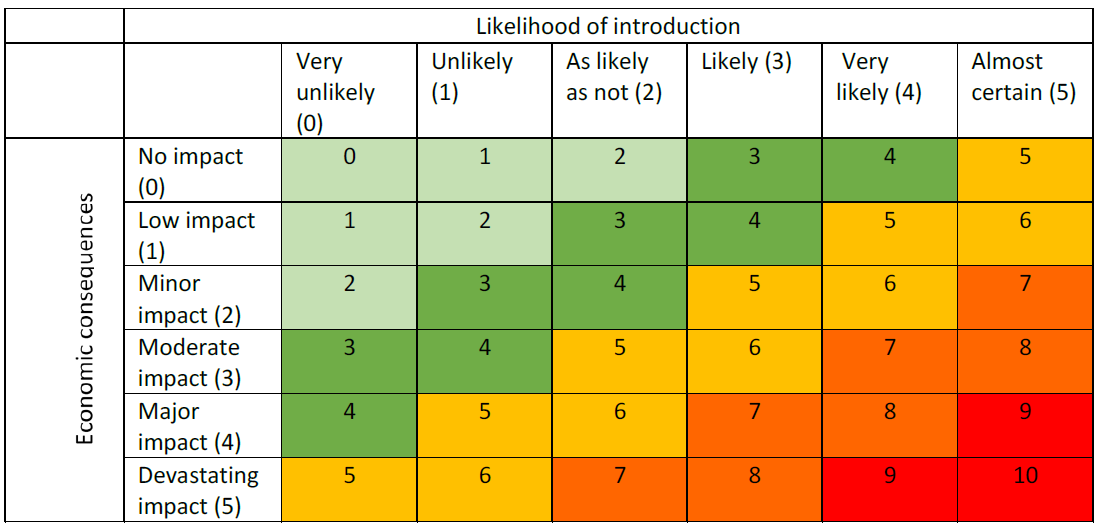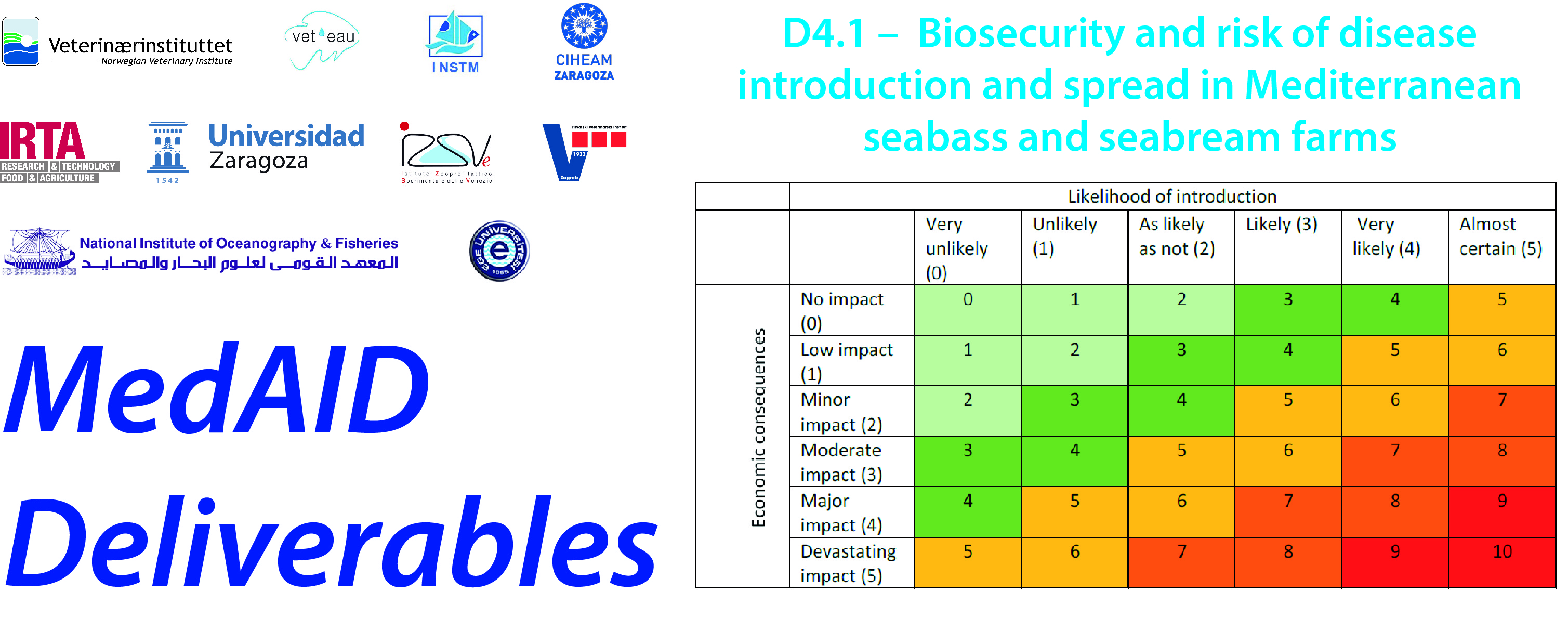The MedAID project (Mediterranean Aquaculture Integrated Development) aims to improve the key performance indicators (KPIs) of Mediterranean mariculture and considers health and welfare prerequisites for sustainable and profitable aquaculture in the Mediterranean area. Work Package 4: “Health management and diseases and fish welfare” addresses health issues and aims to provide tools and common strategies for the prevention and diagnosis of major diseases by creating an operative and collaborative Mediterranean platform. Task 4.1 aims to assess the risk of introduction and spread of emerging diseases at farm level, and to describe biosecurity measures to improve disease biosecurity management in seabass and seabream production in the Mediterranean basin.
A questionnaire survey was executed during the period 2018-2019. A convenient sample drawn from the MedAID database of farms/companies covering the Mediterranean basin included a total of 88 farms producing seabass and/or seabream from Croatia, Egypt, France, Greece, Italy, Spain, Tunisia, and Turkey. The purpose of this survey was to obtain an overview of farm and health management, biosecurity measures, fish health monitoring and disease diagnostics of Mediterranean marine fish farms. The questionnaire contained 19 different themes and was performed as face-to-face interviews. A univariate statistical analysis was run to test for significant association between farm mortality and various variables. Major findings were the significant association between farms reporting no major mortality due to pathogens and farms with good biosecurity practices.
Being able to measure is to be able to improve. Measuring biosecurity, therefore, provides a way to pinpoint biosecurity actions applied, evaluate and identify weaknesses and gaps, improve a farm´s overall biosecurity, and compare more objectively to others. Positioning a farm in a quantitative way may motivate farm personnel to improve biosecurity. In order to achieve a measurable level of on-farm biosecurity, a risk-based weighted scoring system was developed (adapted from Biocheck.Ugent®). The system approaches internal and external biosecurity in a general manner, focusing on transmission routes shared by the numerous different types of infectious agents. This scoring system can be used to audit a farm biosecurity programme and to address areas and allocate resources to tailor their management and biosecurity measures.
To assess the risk associated with VER/VNN introduction and spread in Mediterranean seabass/seabream production, a risk assessment was conducted using expert opinion to rank the exposure factors. VER/VNN is present in the Mediterranean (Muniesa et al., 2020) and represents a significant risk to production. If introduced in a facility, especially in hatcheries and pre-growing facilities, the disease would have devastating economic consequences (high mortality, stamping out, losses of contract and reputation) (Figure a). According to expert opinion, the highest probability of introduction of VER/VNN to a hatchery or pre-growing facility is by untreated water, live fish and eggs and vehicles transporting juveniles. Treating water could help to reduce the risk of VER/VNN introduction in a hatchery from very high to medium. Even though the risk of VER/VNN introduction will then be lower (now medium) the potential impact (economic consequence) still remains very high, which emphasizes the need to implement as many biosecurity measures as possible. The probability of introduction to on-growing sites was considered “very likely” or “almost certain” for most risk pathways. However, the economic consequence is moderate, varying by fish size and mortality. It should be noted that according to expert opinion the likelihood of VER/VNN introduction and spread via water, pests, and feed are “almost certain”, as many experts consider this disease to be endemic in some on-growing areas. When it comes to on-growing facilities, wild fish, well boats, truck/transport water, and service boats are additional identified risk pathways.

One of the challenges in this study was data collection and variability in databases between farms. Essential data need to be recorded in a standardized and harmonized system in order to be more accessible for analytical purposes that can benefit industry, authorities, and research.
Access to the full deliverable

